Monkeys, parrots, turtles and other
wildlife that lives around
San Juan del Sur Nicaragua
Nicaragua has the highest percentage of forest coverage of any of the Central America countries, combined with the lowest population density.
It is also one of the most biologically diverse regions with a great variety of wildlife, over 1,400 animal species and 12, 000 varieties of plants with well over 5000 that have not been classified yet!
As a beautiful, diverse and still somewhat undeveloped country, one of Nicaragua’s biggest attractions is its wildlife. Filled with all kinds of interesting animals, birds, fish, insects and plants, a nature lover will find Nicaragua a virtual paradise. Of course, not all these creatures are within easy access as many of the animals live in the inaccessible parts of the rainforests. But, here is some of the wildlife you may see when
visiting the area of San Juan del Sur.
Land animals: howler monkeys, anteaters, opossums, sloths, squirrels, armadillos, porcupines, margay, ocelot, coati, jaguarondis, skunks, bats, iguanas, lizards, geckos, turtles, snakes, frogs, toads, leaf cutter and
army ants, termites, tarantulas, butterflies, dragonflies, beetles, katydids, scorpions, mantis, grasshoppers and bees.
Birds: parrots, parakeets, toucans, owls, thrushers, hummingbirds,
turkey vultures, caracaras, hawks, herons, egrets, ground doves, motmots, woodpeckers, tanagers, bananaquits, robins, kiskadees, magpie jays,
and many other species of birds.
Marine animals: whales, turtles, dolphins, manta rays.
Sea Birds: frigate birds, pelicans, terns.
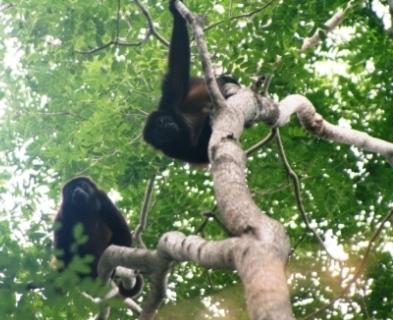
Howler Monkeys in San Juan del Sur Nicaragua
Below is some of the wildlife that you are most likely to see around San Juan del Sur;

Howler monkeys, probably the most seen of our wildlife, they are easily found just outside of town. Listen for their howl and look in the tree tops for movement.
There are six species of howlers in the world and only one in Central America, the mantled howler monkey, so-called because of the long reddish ruff of hair along the flanks of adults.
Howler monkeys are among the largest of the New World primates, weighing
6 to 9 kilograms when adult.
They are vegetarian, eating new leaves, fruits and flowers for much of the year. But when fruit is in short supply, which generally occurs at the end of the rainy season and during the transition into the dry season howlers are able to live for weeks or months at a time on diets composed entirely or almost entirely of leaves, one of their favorite being papaya leaves.
Howler monkeys are so called because of their vocal howl a long, drawn-out sonorous call produced by drawing air into an enlarged hyoid bone in the throat. This vocalization, produced primarily by males, is regarded as the loudest call of any Central American animal and can be heard for a distance of two kilometers or more under good conditions.
All howler monkey troops typically give this call early in the morning in a type of dawn chorus which serves to let other howler monkey troops in their general area know their precise location. Howler troops dislike one another intensely and tend to fight if they come into contact. By howling, troops are able to space themselves efficiently throughout the forest canopy and avoid energetically costly and dangerous fights with other groups. Howler monkeys also tend to howl in the late afternoon to announce their sleeping site as well as prior to heavy rain storms.
Howler monkeys live in their territorial troops of about 15 to 20 individuals of both sexes and all ages.
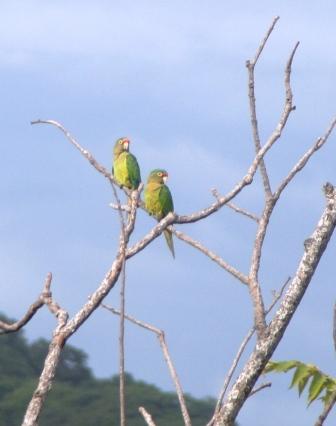
Parrots and parakeets,
another on our list of most likely to see, even in town, listen for the loud squawking as a flock flys by and as they roost in the trees around dusk and dawn.
With bright reds, greens and yellows, parrots are an eye-catching element of nature. They're native to the tropical zones, mostly in Central and South America.
Parrots live mostly off fruit, seeds and vegetables and live high in trees.
Parrots are social creatures. They flock together and most mate for life.
More than 350 parrot species exist, but four of the most common parrot families are: amazon, conure, macaw and parakeet. Parakeets belong to the parrot family and the word "parakeet" means long tail. They are small to medium sized parrots with long, tapered tail feathers rather than having the stockier bodies and more square-shaped tails found on larger parrots.
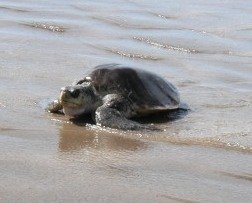
Sea Turtles, if you are here in the right season you may get to see our famous Olive Ridley turtles. There are seven species of sea turtles throughout the whole world and five of those species are present in Nicaragua.
The Green Turtle, the Hawksbill Turtle, the Leatherback Turtle and the Olive Ridley Turtle can be found along on our Pacific Coast. The Loggerhead Turtle is only found along our Caribbean Coast.
The most common turtle at the Pacific beaches is the Olive Ridley Turtle. Sea turtles return to the same beach in which they were born to lay millions of eggs. There are other places in the world that bear witness to turtle hatching, but Nicaragua is one of only four countries where turtle hatchings occur on such a large scale.
From July to December is the season to see our Olive Ridley Turtles as they come ashore to lay their eggs in arribadas (masses) along our Southern beaches and they can be found swimming along our coast in large groups at this time of year.
One of the largest groups of turtles can be found at the La Flor Wildlife Reserve, a horseshoe of white sand beach lined by magnificent tropical rainforests and rocky cliffs. Located just south of San Juan del Sur, this natural refuge covers only a mile and a half of beach, yet attracts an unbelievable number of turtles each year, including more than 200,000 Olive Ridleys, one of the world's smallest species.
After arriving at the beach, the turtle starts to slowly explore the sand until she find an ideal place to lay their eggs. Using two fins, she starts to remove the sand which is then pushed away from under her body using the two rear fins. She will dig a circular hole and start depositing her eggs, one or two at a time until about 90 eggs are laid. At the end, the turtle will cover her nest with sand. She will also move some more sand around the nest to further disguise the location. Finally, the turtle crawls back to sea where she slowly swims away.
The eggs will then be at the mercy of several predators as well as the tide which can bring forceful waves to the beach. After two months the eggs will hatch and the baby turtles will start their difficult voyage to the open ocean. The journey from the nest to the open water is the most dangerous part of the baby turtle’s life. There are many threats to the small turtles, and only few out of the thousands hatchlings survive until adulthood.
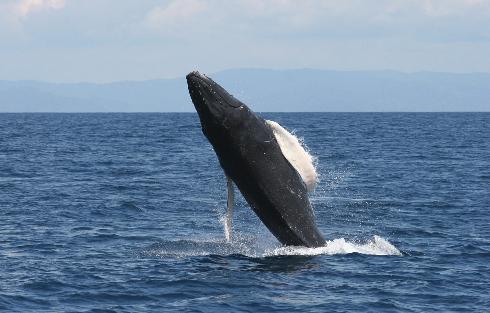
Humpback Whales, also some of our wildlife that occurs seasonally and one that involves a boat trip for good viewing but not one to miss!
Whale watching season runs from January to March in Central America and Nicaragua is the winter breeding ground for the humpback whales. Humpbacks live in the oceans and seas around the world and migrate up to 25,000 kilometers each year. Humpbacks migrate at 3-9 miles per hour or 4.5-14 kilometers per hour. They feed in the summer in the polar waters and migrate to the tropics to breed and give birth in the winter. During the winter, humpbacks fast and live off their fat reserves. The species' diet consists mostly of krill, (small crustaceans) and small fish. Humpback whales grow to be about 52 feet (16 m) long, weighing 30-50 tons.
Humpbacks whales sing long, complex songs. A typical song lasts from
10-20 minutes and is repeated continuously for hours at a time, and changes gradually from year to year. Singing whales are males, and the songs may be a part of mating behavior. The song of the humpback whale can travel for great distances underwater.
Humpback whales have a life expectancy of 45-50 years. It is estimated that there are over 10,000-15,000 humpback whales world-wide. Humpback whales are an endangered species. Because their feeding, mating, and calving grounds are close to shore and because they are slow swimmers, the humpback whales were an easy target for early whalers. The International Whaling Commission (IWC) gave them worldwide protection status in 1966, but there were large illegal kills by the Soviets until the 1970's. It is believed they number about 30,000-40,000 at present, or about 30-35% of the original population.
Humpbacks come in four different color schemes, ranging from white to gray to black to marbled. There are distinctive patches of white on the underside of the flukes (tail). These markings are unique to each individual whale, like a fingerprint. The humpback's skin is frequently scarred and may have patches covered with barnacles.
Humpbacks travel in large, loose groups. Most associations between humpbacks are temporary, lasting at most a few days. The exception is the strong and lasting bond between mother and calves. Humpback whale breeding occurs mostly in the winter to early spring while near the surface and in warm, tropical waters. The gestation period is about 11-12 months and the calf is born tail first and near the surface in warm, shallow waters. The newborn instinctively swims to the surface within 10 seconds for its first breath; it is helped by its mother, using her flippers. Within 30 minutes of its birth the baby whale can swim.
Humpback whales are active whales. They can throw themselves completely out of the water (breaching), and swim on their backs with both flippers in the air. They also engage in "tail lobbing" (raising their huge flukes out of the water and then slapping it on the surface) and
"flipper slapping" (using their flippers to slap the water).
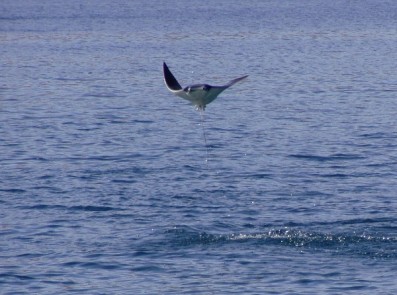
And, if your out on a panga boat trip you may get to see some
Manta Rays.
Manta rays are a mystery to most people since they are not often seen in captivity. They are
very close relatives of the shark.
Ironically, sharks as well as whales are their main predators. They are also closely related to the stingray but they don’t have a stinger.
The Manta Ray has the largest brain to body ratio of
all sharks and rays on Earth.
The average life span for a Manta Ray is 20 years and they can be
up to 25 feet in length and weight as much as 5,000 pounds.
They are fascinating creatures and are known for the
acrobatics of leaping and jumping.
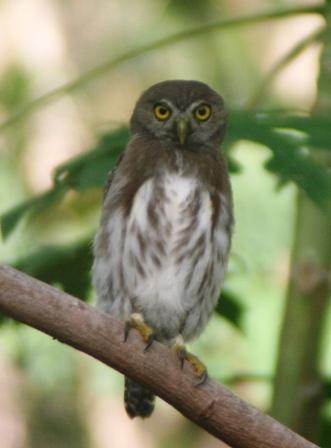
Owls, we have a wide variety of owls and most are nocturnal though our pygmy owls are crepuscular, active at dawn and dusk.
There are about 162 different species of owls alive today, inhabiting a huge variety of ecological niches, from rainforest to tundra.
Owls are medium to large birds with strong talons, a downward-curved bill, acute hearing and keen eyesight. Most owls are nocturnal hunters that locate their prey using a combination of sight and sound. Their eyes are large thus enabling them to gather ample light under dim conditions.
Owls' eyes face forward giving them binocular vision, a characteristic that helps them sight their prey with great accuracy. Owls have cylindrical-shaped eyes and because of this shape, owls cannot rotate their eyes within their sockets to change their point of focus. Instead an owl must rotate its head to redirect their gaze. To compensate, an owl can rotate its head about 270 degrees, offering it a wide range of sight.
Owls also have sharp hearing. Their ear openings are located asymmetrically on either side of their head, a configuration that gives them three-dimensional sound perception and enables them to pinpoint the slightest scuffle or rustle made by potential prey. Owls are good hunters and feed on insects, small mammals and birds up to thrush size.
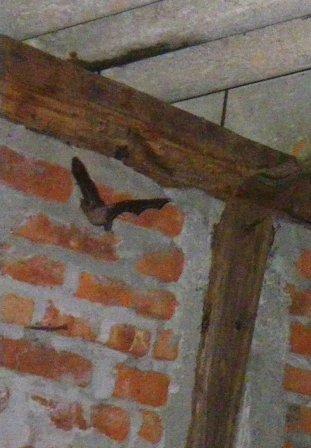
Bats, if you are staying outside of San Juan del Sur you will likely see bats around dusk. Good, since many are insect eaters!
Nicaragua is home to 94 of the 126 species of bats in Central America. Bats are flying mammals in the order Chiroptera.
Many species feed primarily on fruit, while several types feed on nectar and pollen. Fruit bats perform an extremely important function as seed dispersers. Nectar-eating bats are important pollinators.
Many plant species depend almost entirely on bats for pollination.
Although bats have relatively good eyesight, most depend on their superbly developed echolocation (or sonar) system to navigate and capture insects in the dark. Bats emit pulses of very high-frequency sound
(inaudible to human ears) at a rate of a few to 200 per second.
By listening to the echoes reflected back to them, they can discern objects in their path. Their echolocation ability is so acute they can avoid obstacles no wider than a piece of thread and capture
tiny flying insects even in complete darkness.
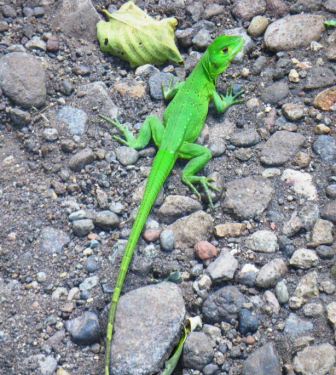
Iguanas, both green and blacks while rather illusive can at times be seen out in the countryside.
Green iguanas are among the biggest lizards and a full-grown green iguana can be between four and six feet, although they have been known to grow up to seven feet long. This includes the tail, however, which can make up about half the body length.
Green iguanas, not surprisingly, are green in color, but can be found in different shades ranging from bright green, to a dull, grayish-green.
Green iguanas have good senses of hearing and smell, and great vision. Green iguanas tend to live alone, but may be seen
in groups occasionally in good sunny basking spots.
Iguanas lay about 50 eggs at a time, in holes in the ground called burrows. They also dig pretend burrows to confuse any animals that may be looking for eggs to eat. After female iguanas lay their eggs, they leave them and do not return. When iguana babies hatch they grow up without any care from their parents. Green iguanas lay many eggs, but only 3-10 babies actually survive to be adults. It takes green iguana eggs about 8-10 weeks to hatch and about 2 years to become mature adults.
Green iguanas are omnivorous, so they eat both plants and meat. They tend to eat mostly plants, though, especially leaves and fruits.
Like many tropical species, the green iguana is also threatened by habitat destruction and has become extinct in some areas and endangered in others. Long known as the "chickens of the trees," green iguanas have been eaten both as a delicacy and a staple food for at least 7,000 years.
The green iguana is also a victim of the pet industry. Many people in the United States and elsewhere want a green iguana for a pet, so there is a big demand for their capture. Although many pet iguanas are now being raised on iguana farms, capture from the wild has lowered their numbers.
Black iguanas are smaller than greens and transform from green to brown to black as they mature. They are great diggers and baskers and can be found sunning stone walls, rocky open slopes and branches
of large trees along the open borders of the forests.
Black iguanas lay clutches of 20-30 eggs in sandy soil and the
young hatch in about 90 days.
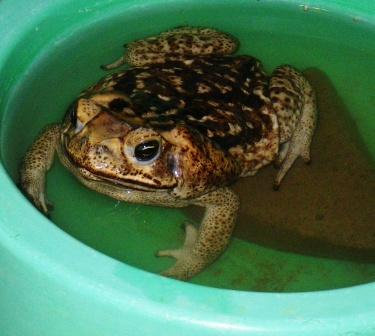
There are many different types of frogs andtoads here in Nicaragua,
the most common being the tree and leaf frogs and the marine and cane toads.
They eat insects so they are very welcome around the premises and can be seen at night.
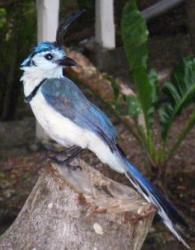
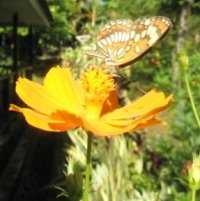
Also keep your eyes open during the day time for our many other species of birds, bees and butterflies.
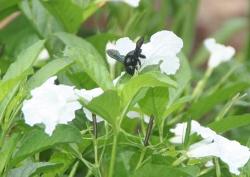
San Juan del Sur Nicaragua, come enjoy a vacation
and see our tropical wildlife
Copyright 2010-2017 San-Juan-del-Sur-info.com
Design by Phoenix Rising of Hart, Behrens & Associates
Today's weather in
San Juan del Sur

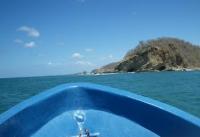
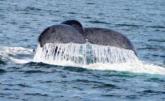
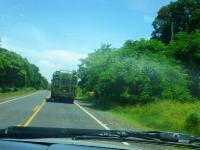


Weather in San Juan del Sur Nicaragua



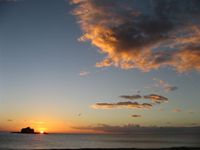
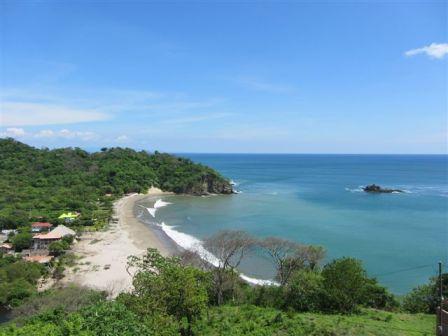
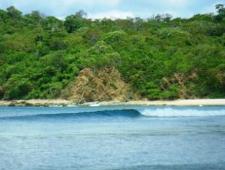
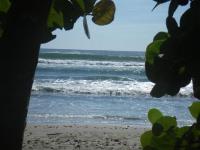







Today's weather in
San Juan del Sur



